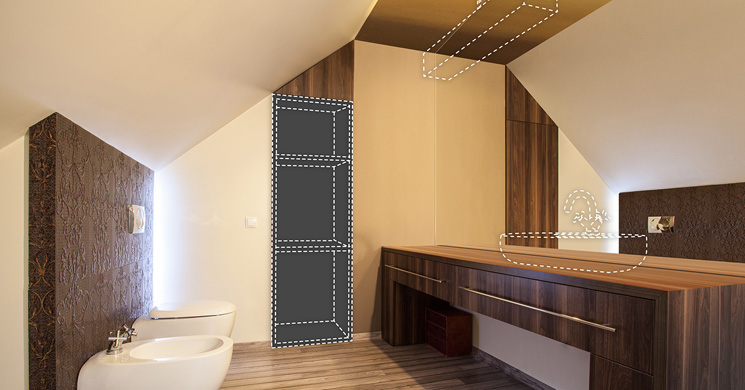If you’re like most Americans, then your home represents your single largest asset. How do you tap into your most significant investment, while still having a place to live? HELOCs — or Home Equity Lines of Credit — can offer a solution.
Different from a home equity loan, a HELOC is an open line of credit secured by your home’s value. You can draw on that credit line over a period of years and for varied reasons, from remodeling your home to helping pay for your child’s college education.
Remodels and more
If you’ve been contemplating a home remodel project, then a HELOC can help. A HELOC works like a credit card, but with a much lower interest rate. You open the line of credit, which allows you borrow up to a specified amount, and then draw on it as needed, usually for a period of up to 10 years.
This can be especially useful for home improvement projects, because you can tailor your loan amount to the project’s fluctuating costs, or borrow in increments if you are planning several projects — say an interior remodel and exterior painting and landscaping. Just as important: HELOCs can provide a safety net in case anything goes wrong. From an unexpected water leak to increasing material or labor costs, you’ll have access to more money if you need it.
During those first 10 years of your HELOC, you only pay interest on what you’ve borrowed. You then repay your debt plus interest in the second part of the loan’s term, which is usually 15 years. Given that the average kitchen remodel costs $20,000, the rate you pay to borrow funds can make a big difference in how much you ultimately spend. Consider that at the time of this writing HELOC interest rates are currently hovering just under 4%, while credit card APRs average closer to 15%. As an added bonus, the interest you pay on your HELOC may be tax deductible.
Beyond home improvement
While a HELOC is a cost-efficient way to fund home projects, you can also use this credit solution for other major expenses unrelated to your house. With the start of a new school year fast approaching, HELOCs can offer families another way to pay for college tuition and related higher-education costs. The interest rates are often lower than many private student loans as well as federal parent loans. The line-of-credit structure allows you to borrow what you need, making HELOCs a viable option for filling gaps as you assess your college student’s financial needs.
For example, you might consider using a HELOC to fund the difference between your student’s federal loans and what you’ve saved for his or her tuition. Having access to a low-interest-rate HELOC can allow you to help pay for your children’s college, while still saving and investing for your own long-term goals such as retirement.
HELOCs do come with a couple of considerations. For instance, most HELOCs have variable interest rates, which mean that your interest rate — and monthly payment — could rise over time. You should have a stable source of income to ensure that you’re able to make the monthly payments over the life of the loan. This is especially true in the last years when those payment amounts increase as you pay off the interest and the balance. Lastly, there may be origination fees. So you should open a HELOC with a project or expense in mind that justifies the cost of those fees.
More than a place to live, your house can provide you with additional means to fund your home improvement dreams and higher education needs. Borrow wisely with a HELOC, and you’ll transform your single largest asset into working capital.




